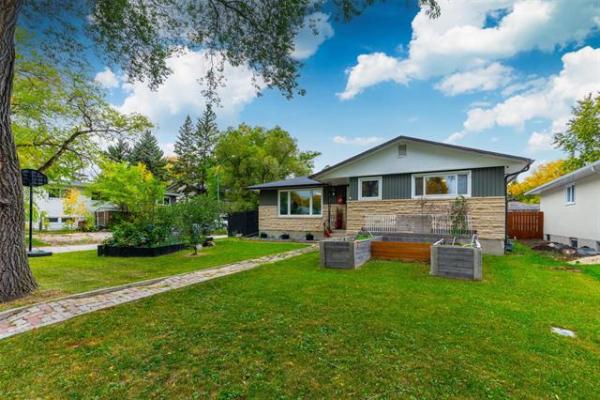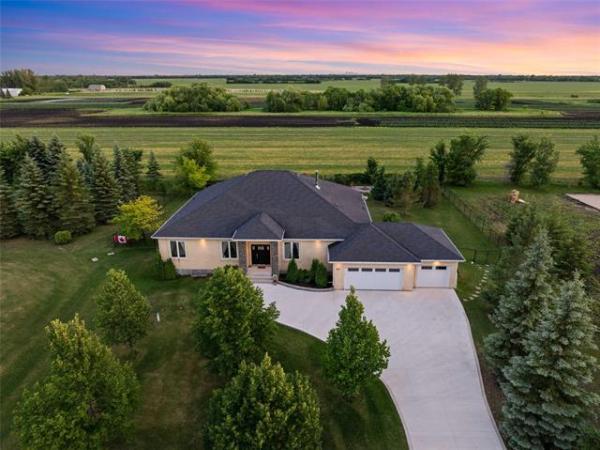QUESTION: We have just recently completed a cabin at Lake of the Prairies and are having some issues with sewer gas.
The cabin is constructed close to the lake which is man-made, where the Assiniboine River has been dammed at Shellmouth and flooded back about 45 miles. There are hills at the back of the cabin, the Assiniboine Valley, and the lake to the front.
The structure is a 4/12 pitch bungalow. We have one sewer stack on each end of the cabin. In the summer the sewer smell drifts down most times either to the deck side of the cabin or the back, where the main entrance is. I believe it likely has something to do with the air pressure, as you can really notice how the smoke from the chimney in the winter runs along the roof line, down and away.
Is there anything we can do that would stop the smell from coming down, possibly extending the pipes? Please let me know if you have any suggestions as there are times that you just can't sit on the deck because of the smell.
Thanks, Rita Hanlin
ANSWER: You have presented a problem that may be very difficult to solve, but has likely been experienced by others with similar geographical characteristics near their homes. An explanation of the situation is pretty straightforward and may help with remediation.
Sewer gas is produced from the waste portion of the plumbing system in buildings due to decomposition of organic matter from toilets and sinks. It may be primarily composed of methane, but will have other components that may be equally or more offensive and toxic.
Because of the hazardous and noxious nature of this gas, it must be eliminated from your home and prevented from entering the living area. Proper water-filled P-traps underneath the plumbing fixtures and drains prevent this gas from entering the living area. The open tops of the drain vents above your roof allow the majority of this gas to escape, relatively harmlessly, into the air outside.
In normal situations, sewer gas will naturally rise above the roof and be harmlessly carried away by wind and other natural forces. With your cabin, the topography of the land, combined with the high relative humidity due to proximity to the lake, is screwing up this natural process. You are likely correct that differing air pressures created by the valley and the hills surrounding the building are the culprits.
I have experienced similar situations on a few occasions with homes built on a slope above man-made retention ponds, even in urban areas. My initial reaction was to suspect a defect or blockage in the plumbing drains, but further evaluation normally reveals a temporary situation with no visible workmanship issues by the plumber. Unfortunately, there is little that I can offer as a solution to my clients, but rarely is it a serious or constant problem.
In your case, there may be more chance that something could be improved in the overall plumbing system, due to the nature of rural systems. Most modern rural systems are a combination of a holding tank, pump and field. Unless you have a very large lot, you may not have been allowed to drain your effluent to a field due to the proximity of the lake, so I will assume that you simply have a holding tank that requires regular pumping. In that situation, there's a chance that the excess amounts of sewer gas are escaping the tank due to its location, the length of the drain pipes from the cabin, or direct connection to drains.
The first option may be to install an inline backflow preventer, or backwater valve, to minimize gas escaping from the holding tank into the main stacks. Unfortunately, depending on the location of this valve, it may not be acceptable to the local building officials and they should be consulted before attempting such an installation.
The previous point leads me to my next suspicion, that the plumbing drains may have been amateurishly or improperly installed. If you have installed portions of the plumbing yourselves, especially the drains, you may have done something wrong. Improperly plumbed sink drains, missing or wrongly configured traps and vents, and other drain defects are some of the most common issues I find during inspections. This is particularly notable on newly renovated buildings, and can be attributed to amateurs that simply don't know the correct method of installation and function of these critical components.
If your plumbing is checked out and there are none of the defects I have identified, there may be little you can do to remedy the situation due to the topography around your cabin. Inspection of the system by a local, licensed journeyman plumber may yield a solution, especially if you installed portions of the plumbing yourselves. Beyond that, while only a stopgap measure that can provide temporary relief, you could use a common household fan to direct any noticeable odours and gas away from your deck when sitting outside.
Ari Marantz is the owner of Trained Eye Home Inspection Ltd. and the President of the Canadian Association of Home & Property Inspectors-Manitoba (www.cahpi.mb.ca). Questions can be e-mailed to the address below. Ari can be reached at (204) 291-5358 or check out his website at www.trainedeye.ca.
trainedeye@iname.com



